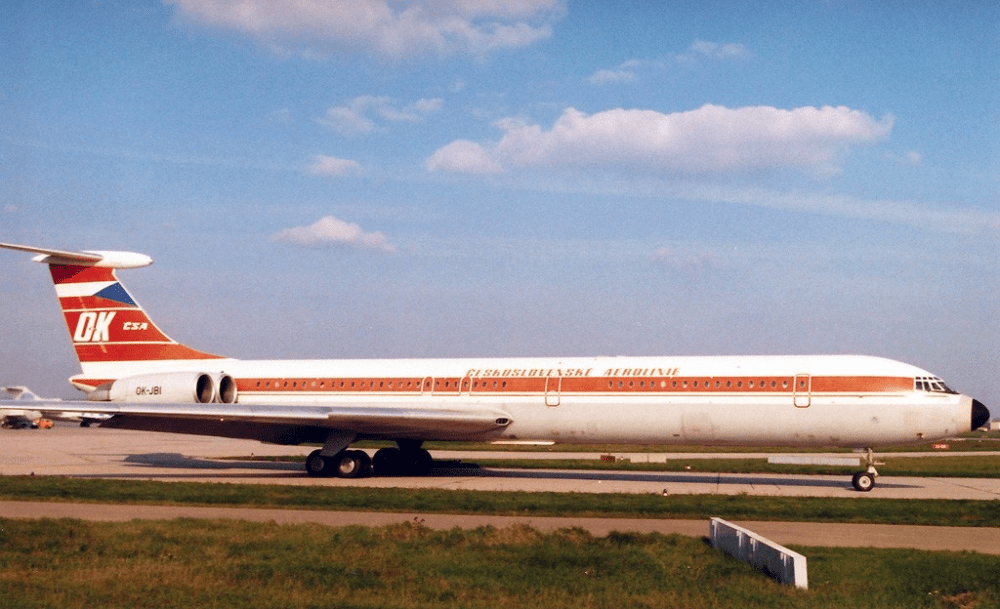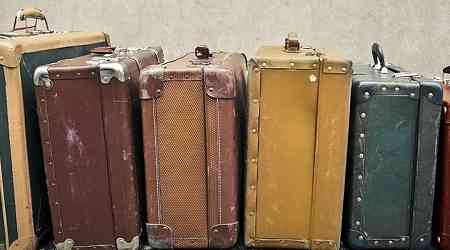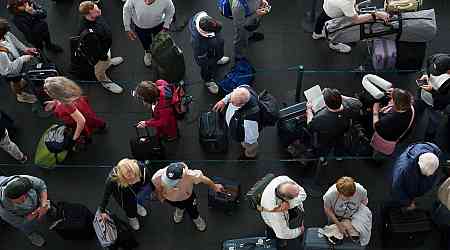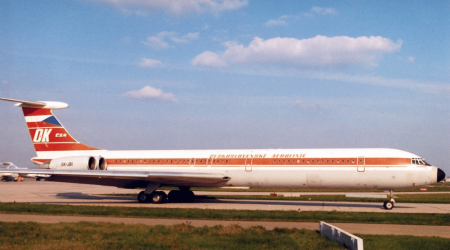There aren’t all that many airlines that have been around for over 100 years, and now, that exclusive club has lost a member. Flight 767 from Paris to Prague marked the last flight of Czech Airlines — often known as ČSA — after 101 years almost exactly to the day. Though Czech had been largely an afterthought in recent years, it still deserves a look back to celebrate an impressive history.
The airline took to the skies with a Czech-built Aero Letňany A.10 on October 29, 1923 as the state airline of Czechoslovakia with a flight between Prague and Bratislava. That is a route it would operate almost without interruption until 2019. I said “almost” without interruption, and that’s because in 1939 the airline effectively disappeared — along with Czechoslovakia itself — after Nazi invasion. After the war, the airline came back to life.
Czechoslovakia was obviously a very different place after World War II. In 1948, a coup saw the communist party take charge and put the country firmly in the Soviet sphere of influence. The airline, naturally, took on Soviet aircraft and eventually expanded to fly across the Atlantic. It had a large fleet of Ilyushin Il-62s that connected the usual friendly Soviet hotspots like Havana — as well as important global cities like New York — to Prague.
It was around this time that the airline really leaned into its OK code. OK was the prefix assigned to all aircraft registered in Czechoslovakia, and it became the two letter code for ČSA. This breath-taking Il-62 shows off the livery at the time. This was my first memory of Czech, and it’s been an enduring one.

JetPix (GFDL 1.2 or GFDL 1.2), via Wikimedia Commons
When the Soviet empire fell apart in the 1990s, so did Czechoslovakia. ČSA was actually ahead of the curve by two years when it split into Czechoslovakian Airlines (which later became the Czech we know today) and Slov Air in 1991. It wasn’t unitl two years later that the country followed suit and split into the Czech Republic and Slovakia.
Czech spent the 1990s retiring its Soviet fleet and buying more modern western aircraft. It was partially privatized, and Air France took a stake of nearly 20 percent, bringing the airline into a western sphere of influence. Czech was an early alliance partner, joining SkyTeam in 2000.
It’s around this time that Cirium data kicks in, so you can see the long, slow demise for yourself…
Czech Airlines Monthly Departures by Equipment Type
Data via Cirium
The first decade of the 2000s saw the airline grow to more than 200 daily departures. By the end of 2005, it had the bulk of its service from Prague, but it also served Brno, Karlovy Vary, and Ostrava. Further, it tapped into its legacy with some limited flying from Bratislava, Košice, Sliač, and Žilina in Slovakia. It would later add Poprad-Tatry.
Outside of short-haul flying within Europe, the Middle East, and North Africa, the limited long-haul network was focused on North America with A310 flights to both JFK and Newark along with Montréal and Toronto. It also headed east to Dubai and Colombo, even briefly serving the Maldives and Kuwait.
But as the 2000s went on, the airline struggled mightily. The summer of 2009 was the last year the A310s would operate. They served JFK and Toronto until October when long-haul service was suspended completely. The airline had pieces spun off to keep it afloat, including its ground handling business, and things remained tenuous until 2013 when the country decided to give it another go.
It was in 2013 that just shy of half of ČSA was sold to Korean Air. To say it was an odd coupling would be an understatement, but it allowed Czech to acquire A330s and start flying to Incheon which… I guess was a good thing? Ok, probably not. The airline tried to grow as Korean sunk its teeth into the company, but to the surprise of nobody, that didn’t last long.
In 2014, the vanilla-named Travel Service which operated a leisure airline in the Czech Republic bought a third of ČSA. It was three years later that Korean finally gave up on its plan, selling its share out to Travel Service, making Czech almost entirely owned by that company. In 2018, Travel Service renamed its airline subsidiary to be called Smartwings across the board.
Smartwings did not waste time in stripping ČSA of its least profitable routes. It slashed and burned, turning over some routes directly to Smartwings while ČSA continued to shrink. There was a brief plan to renew the fleet, but then the pandemic hit.
During the pandemic, ČSA barely existed. It ended its Incheon route, severing the last vestige of its Korean Air partnership by returning its leased A330. The airline was bankrupt. By the end of 2022, the airline had two airplanes, only one of which actually flew. It had been reduced to only operating the Prague – Paris/CDG route after Hurghada and Keflavik finished their summer season. But ČSA wasn’t dead just yet.
The airline emerged from bankruptcy with a strange ownership structure that I’m not even sure I understand. A new company called Prague City Air took a 70 percent stake with the other 30 percent being held by Smartwings. But the primary owners of Smartwings, Jiří Šimáně and Roman Vík, also control Prague City Air. And earlier this year, Prague City Air bought the half of Smartwings that was owned by a Chinese investment firm. So it seems like the same people control both airlines but through various different entities.
With everything now apparently held by the same Czech people and companies, the decision was made to consolidate it all. Czech will now be the holding company, but all operations will be handled by Smartwings. Czech pulled out of SkyTeam and stopped flying on October 26.
The Czech Airline brand seems to still exist. The website is active, but all reservations are redirected to Smartwings. I have no idea what the plan is for the brand or if it will just fade away.
Regardless, the company’s network looks completely different than it used to. Here is both Czech and Travel Service/Smartwings from July 2005:

Data via Cirium
And here is how it looked this past summer in July 2024.

Data via Cirium
It has gone from a global network carrier to a short-haul leisure operator. That leaves the network needs of the Czech people to airlines like Air France-KLM, the IAG airlines, and Lufthansa Group. That’s what the market can largely support. The need for a state-owned flag carrier passed long ago.




























